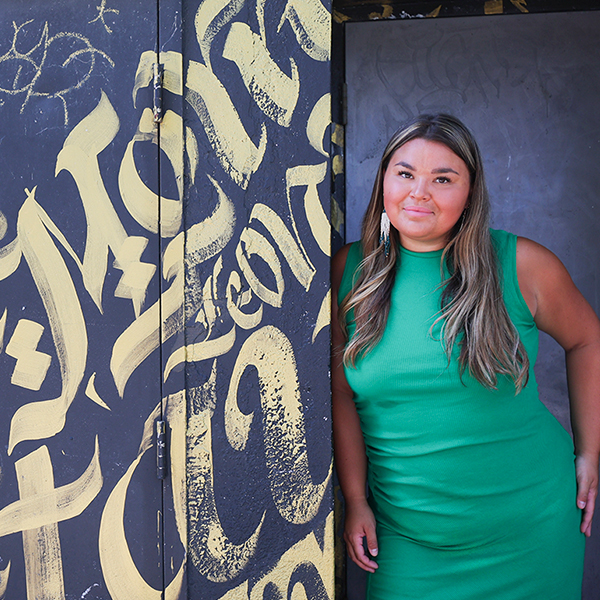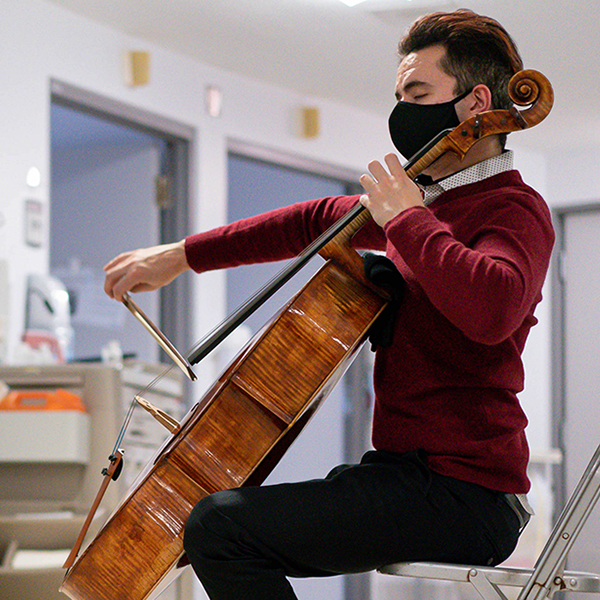Solitude goes with the carillonneur’s job. Andrea McCrady, MDCM’80, has 53 bells under her command at a console located 188 steps up the Peace Tower, ranging in size from a high-voiced four-and-a-half kilos to a resounding heavy-metal 10 tonnes. But as Canada’s official Dominion Carillonneur delicately hammers away with her hands and feet on the loom-like array of knobs and pedals, there is no one present to applaud the artistry she conjures up out of Parliament Hill’s massive singing tower.
On the ground, particularly as the pandemic rigours loosen up, it’s a different story. Civil servants, tourists, politicians, work crews, protesters, and anyone else passing through the focal point of the nation’s capital are transported into a different mental space by the sudden realization that there’s music in the air.
“They can’t see me,” says the former family doctor turned one-of-a-kind national instrumentalist, “but they sure as heck can hear me.”
Prime Minister Mackenzie King called the carillon “the voice of the nation” when the Peace Tower was inaugurated in 1927 as a memorial to Canada’s First World War sacrifice. For her midday recitals, McCrady translates that unifying vision into an ingeniously diverse array of attention-getting tunes.
After the obligatory “O Canada,” she fills the air with folk songs and opera arias, rap numbers and movie themes (John Williams’ “Imperial March” from the Star Wars franchise is a perennial favourite), snatches of symphonic movements to mark a composer’s anniversary and familiar pop anthems that reach a higher order of resonance when played on the carillon in the nation’s most public space – such as John Lennon’s “Imagine,” which McCrady adapted for bells and played to honour the late Jack Layton when his cortege departed a thronged Parliament Hill.
Performing in relative anonymity, McCrady can’t easily gauge the reaction of her distant audience or calculate the effect her bells achieve as the commemorative voice of the nation.
“When Alex Trebek died last November, somebody said, ‘Are you going to do something for him?’ I thought, well, that’s simple enough, I’ll just grab the Jeopardy! theme and add it to the end of my noon program. Somebody outside recorded it being played and put it up on YouTube, and by the next day there were 12,000 hits – a single-line melody of the Jeopardy! theme, and it brought everyone together into this same sentimental feeling: we’ve lost a real neat guy.”
The pandemic temporarily shut down her daily concerts, and put an end to one of her greatest joys, the carillon course she helped establish at Carleton University. Though she resumed regular performing last summer, the in-person musical experience remains imperfect between Covid strictures and the sometimes intrusive renovations of Parliament. To reaffirm the connection between the nation and its Peace Tower bells, she introduced live audio-streaming of her recitals, using well-placed microphones positioned throughout the belfry that filter out jarring noise – but only for the audience, not for the harried carillonneur herself. “With the cacophony of big machines blasting and excavating,” she says, “it’s much better to listen on audio.”
Carillonneurs are undoubtedly a different breed of musician, given the rarity of the instrument and the unusual demands made on the performer. “It is the life of the carillonneur to climb steps,” jokes McCrady, who keeps herself in playing shape by canoeing, skiing, and hiking along Newfoundland’s coastal trails. One of the first lessons at her Dutch carillon school, she notes, was titled How to Climb a Tower. “You don’t arrive five minutes before you have to play, you get there early, and you take your time going up so you don’t arrive with your heart pounding, and you’re out of breath and you’re sweating, and then you have to play a gentle lullaby.”
Her own path to the post of Dominion Carillonneur was far from direct. Born in carillon-free Pittsburgh, she studied Russian and Chinese history at Trinity College in Hartford, Conn., where she sang in the choir alongside students who belonged to the school’s carillon club. “I said, ‘What’s that?’ So they took me up this beautiful Gothic tower – it’s always a Gothic experience – and I listened to it and was totally captured. I tell people that I caught bell fever.”
She applied to law and medical schools, but also won a fellowship to study carilloning across Europe. McGill’s Faculty of Medicine generously offered a deferral, and when she began medical studies in 1976, she took on the role of carillonneur at St. Joseph’s Oratory, which made her a local celebrity. “I was an American, woman, non-Catholic, English-speaker, I didn’t exactly fit with the Oratory, but they were very gracious.”
She treasured her life in and around Montreal, skating on the Olympic oval, cross-country skiing in the Laurentians, making late-night runs for fresh bagels, cheering the Canadiens as they won annual Stanley Cups and bringing her fascinated outsider’s perspective to bear on the 1980 referendum – “Politically, it was a thriller.”
Her career in family medicine took her to Toronto, Seattle and Spokane, always with a carillon close at hand. But the 9/11 attacks – she was on a plane headed toward a meeting in Boston – made her reevaluate her life. After a 30-year career in medicine, she decided it was time for a change. She returned to university for a degree in music before being offered the Dominion Carillonneur post in 2008.
“I thought, you never know what’s going to happen in life, just like this pandemic, so do it while you can. People ask me, do you miss medicine? No, that was a big chapter in my life. But once I got here, I said, this is always what I wanted to grow up to be.”


